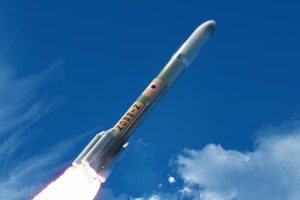
Acknowledging competition from companies like SpaceX, Japan’s Mitsubishi Heavy Industries (MHI) and the Japanese Aerospace Exploration Agency (JAXA) aim to ensure that its next-generation space launch vehicle, the H-3, will cut launch costs by half compared to its current workhorse, the H-2.
The 39th H-IIA vehicle was launched Tuesday afternoon, 12 June 2018, from the Tanegashima Space Center in southern Japan, carrying a government reconnaissance satellite, Radar 6. The first H-IIA rocket was fired in 2001, and the programme, a collaboration between MHI and JAXA, has not had a failed launch since 2003.
“Getting satellites in orbit successfully is the only way to boost confidence,” Mitsubishi Heavy Industries executive fellow Koki Nimura, the senior chief engineer for space systems, told reporters Tuesday, calling the launch “reassuring,” according to the Nikkei Asian Review.
Despite the importance of rocket reliability, launch service providers are increasing pressure for lower costs. “Launch costs have roughly halved, and the interval between launches has shrunk to as short as one week, from the previous gap of two months,” said executive officer Yuichi Hayasaka of Satellite broadcaster Sky Perfect JSAT, to the Nikkei Asian Review.
MHI and JAXA aim to launch a prototype of the H-3, which will be the H-IIA’s successor, in fiscal year 2020. The goal is to lower costs to around U.S.$45.3 million, with a one-year timeframe from order to launch, using shared parts and components sourced from the private sector. The rocket will also be able to be fitted with different numbers of solid rocket boosters to adjust thrust capacity.
“In both price and reliability, the H3 will put up as good a fight or better,” than competitors like SpaceX, said Naohiko Abe, Mitsubishi Heavy’s senior vice president in charge of space systems, adding that he hoped to launch two to three satellites per year.
SpaceX has been at the forefront of the cost-cutting mission, making 80% to 90% of its parts internally and incorporating off-the-shelf technologies. Its unique rocket reuse programme is pushing costs down even further.
Global demand for geostationary satellites is around 20 per year, but concerns are that requests will drop as newer, longer-lasting satellites are developed. Demand for miniature satellites, however, is expected to grow sharply.
As new players enter the industry, launch providers may compete even more fiercely to lower their costs and prices.





